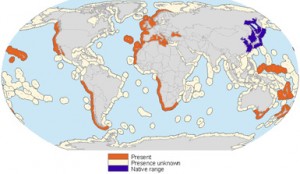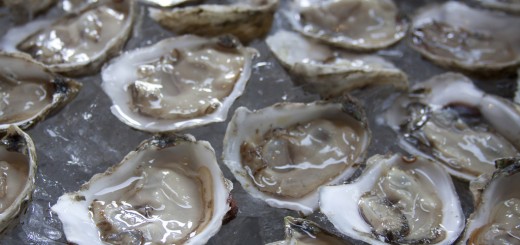The Multi-Cultural History and Contemporary Business of Oysters
By Wilson Caicedo
The Pacific Oyster (Crassostrea gigas), native to Japan, was first introduced to Washington State in 1902. When it proved it was successful, regular shipments of Pacifics began in the 1920s. Hood Canal and Willapa Bay produced the first successful brood stock in 1937. However, it has been introduced to 73 countries with successful cultivation in 17 countries. Ruesink 2005
Due to over harvesting and pollution in the Pacific Northwest, the indigenous Olympia oyster (Ostrea lurida) fell into decline at the turn of the century. To save the industry, the American oyster (Crassostrea virginica) was introduced to the area but did not survive well under the natural conditions. It was then that the Pacific oyster was introduced and ultimately became the staple for cultivation in the region.

The Pacific oyster (Crassostrea gigas) has been introduced in coastal waters around the world. The map shows the Pacific oyster’s non-native range in red and native range in blue, by marine ecoregion (Molnar et al. 2008, Frontiers in Ecology and the Environment).
However, humans and other industries compete with Pacific oysters. Culture rafts and surface long lines can be damaged by sail boats and water skis; sports that are common in the region. Recreational shellfish harvesters, take or damage oysters. Many wealthy property owners tend to believe that aquaculture operations nearby have a negative effect on the value their shore property. Diesel engines called “flopsies” in particular, anger shore residents because the continuous loud noise they produce. Industrial competition can take the form of physical habitat deterioration, water pollution or both. Sulphite waste from pulp and paper mills and fecal contamination in the water damages mortalities to a decline in animal growth and in the quality of the meat. In Samish Bay, seed oysters which used to grow to market size in two years took five years to reach market size after their growing area was affected by pollution. Meat yields went from 80120 oysters per gallon to 130200 oysters per gallon. (Lavoie 2016).


